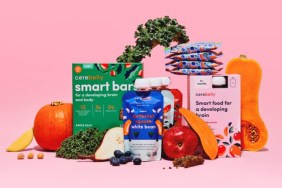It’s a grave mistake to assume that just because something is sold on a supermarket shelf, it’s safe. You might think that baby food is a tightly regulated industry, but it’s actually very far from being that.
“In the United States food companies are allowed to test toxins/heavy metals in singular ingredients,” explains Ashley Brichter, the founder and CEO of Birthsmarter. “They don’t have to re-test the food product as a whole and, when the sum is greater than the total of its parts, we get into trouble, especially when the additives go in at the end of mixing different grains and vegetables.” A recent bombshell congressional report highlighted an alarming number of baby food brands – including Gerber, Happy Baby, and even organic brands like Earth’s Best Organics – that are selling products that contain dangerously high levels of arsenic, cadmium, mercury and lead.
Homemade Nuggets: Wholesome Baby and Toddler Finger Food
In their defense many of these brands claim that the contaminants are ‘naturally occurring.’ How so? They’re present in the earth’s crust and get pushed into the air, soil and water by things like volcanoes (which is why they’re present even in organic products). That said, as we know from things like E. coli, just because something is naturally occurring, doesn’t make it safe. The levels of toxins and heavy metals in food can be increased by things like pesticides, mining, fracking and coal-fired power plants. Store-bought baby food brands also often advertise, as a marketing gimmick, added vitamins and minerals; unfortunately these increase the toxic load, too.
“Not all store-bought baby food is created equal – I love Yumi and Little Spoon as they’re super delicious and healthy – but there are many brands that have alarmingly high levels of heavy metals,” says Kylee Money founder of Parenting Made Joyful. “The contaminants in question could very well cause delays in brain development and could be linked to cognitive, behavioral and learning problems later in life.” There are also links to cancer and reproductive harm.
While it’s impossible to avoid all heavy metals and toxins in food – trust us, if there was a brand that had zero, they would be broadcasting it out to all of us – there are things that can be done to lessen the load. “Ideally you will be looking for organic, non-GMO fruits and veggies and relying on other grains aside from rice, which has higher arsenic in it from the ground water,” says Money. “Pureeing baby food at home in batches and freezing it in ice cube trays is really not as time consuming as you might imagine. Either using a baby food puree product or just cooking a pureeing in a blender or food processor, both routes can be a once-a-week task that can be done in under an hour.” She suggests freezing and labeling and when you are ready to feed your baby, pop a cube into a microwaveable dish and defrost it. “If it’s too thick, thin it out with some breast milk or formula. If it’s too thin, avoid adding rice cereal. Instead you can add more of the puree or add some other grain cereals like bran or oats.”
The Truth About Baby Vitamins
There are gadgets to make the food-making process considerably easier. Cuisinart Mini-Prep Plus 24 Ounce Processor, for example, can chop or grind swiftly most anything you’d want to puree for your tot (or the whole family!), while the Babymoov Duo Meal Station allows parents to steam, blend, puree, warm, defrost and sterilize via an all-in-one design with a programmable LCD screen and audio alerts. They also sell hermetic glass storage containers in various sizes — always opt for glass over plastic as plastic (even if it’s labeled BPA-free) will add to the toxic load.
We get that being a new mom comes with countless things to stress about and while making your own food may seem like it’s high on the list, it really does not need to be. “In the beginning, baby food is all about exposure to new flavors and textures and about sensory exploration and babies learning to use their mouth to move food around and swallow” says Money.” It’s not meant to be the primary caloric source of nutrients, that is still mostly breast milk or formula up until 12 months. “So have fun with it and don’t stress out over making the perfect recipe. Babies will often reject or spit something out at first, but don’t give up on it. It just takes extra exposure to a new flavor or a new texture at first.”
Final food tip: Since we’re on the topic of your baby’s food, introduce prunes ASAP! “They’re a strong flavor and you want your baby to like it and accept it because you will need it to combat constipation down the road. If you wait to introduce it, they may reject the strong flavor.” No prep work required.








